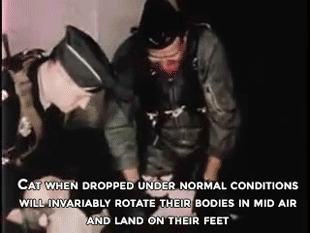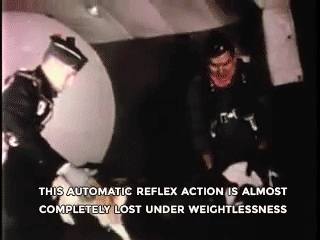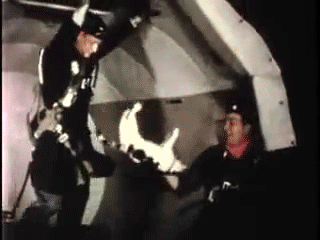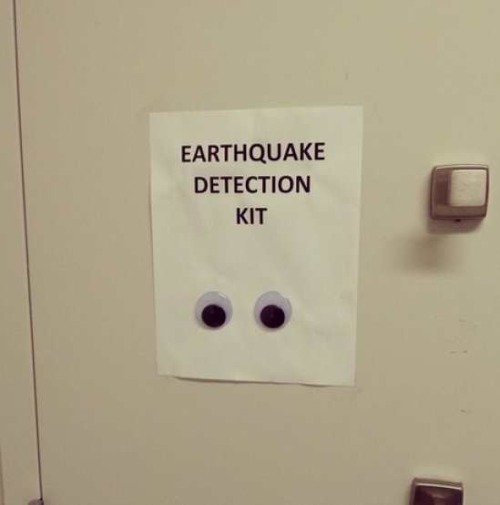Here’s How Nightmarish Humans Would Look If Our Bodies Were Designed To Survive Car Crashes


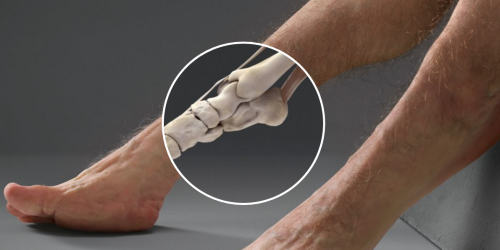
Here’s how nightmarish humans would look if our bodies were designed to survive car crashes
Article by Chris Weller, Tech Insider & Business Insider
If you’re ever in a car with Graham, then don’t bother telling him to buckle his seat belt. His body is already designed to withstand high-speed impacts.
Designed by a trauma surgeon, an artist, and a crash investigator, Graham is a hypothetical scenario come to life. Supported by Australia’s Transport Accident Commission, the project is meant to highlight how vulnerable humans are to injury.
Graham, however, is not.
Keep reading
More Posts from Science-is-magical and Others

This is what a star nursery looks like
Astronomers have spotted a beautiful blue ribbon in space that will one day ignite into a cluster of baby stars.
Astronomers try to track down hot spots for new stars by searching for clouds of dust in gas in the coldest parts of the Milky Way. The ESA’s Herschel space observatory is giving us rare glimpses inside these super-cold star nurseries.
The blue ribbon in this new image shows the coldest part of the cloud. It’s about minus 259 degrees Celsius and holds about 800 times the mass of the sun. Soon all that mass will crunch together and sprout new stars. Yet, one big piece of the star-birth puzzle is still a mystery.
Follow @the-future-now
Flying to New Heights With the Magnetospheric Multiscale Mission
A mission studying Earth’s magnetic field by flying four identical spacecraft is headed into new territory.

The Magnetospheric Multiscale mission, or MMS, has been studying the magnetic field on the side of Earth facing the sun, the day side – but now we’re focusing on something else. On February 9, MMS started the three-month-long process of shifting to a new orbit.

One key thing MMS studies is magnetic reconnection – a process that occurs when magnetic fields collide and re-align explosively into new positions. The new orbit will allow MMS to study reconnection on the night side of the Earth, farther from the sun.

Magnetic reconnection on the night side of Earth is thought to be responsible for causing the northern and southern lights.

To study the interesting regions of Earth’s magnetic field on the night side, the four MMS spacecraft are being boosted into an orbit that takes them farther from Earth than ever before. Once it reaches its final orbit, MMS will shatter its previous Guinness World Record for highest altitude fix of a GPS.
To save on fuel, the orbit is slowly adjusted over many weeks. The boost to take each spacecraft to its final orbit will happen during the first week of April.

On April 19, each spacecraft will be boosted again to raise its closest approach to Earth, called perigee. Without this step, the spacecraft would be way too close for comfort – and would actually reenter Earth’s atmosphere next winter!

The four MMS spacecraft usually fly really close together – only four miles between them – in a special pyramid formation called a tetrahedral, which allows us to examine the magnetic environment in three dimensions.

But during orbit adjustments, the pyramid shape is broken up to make sure the spacecraft have plenty of room to maneuver. Once MMS reaches its new orbit in May, the spacecraft will be realigned into their tetrahedral formation and ready to do more 3D magnetic science.

Learn more about MMS and find out what it’s like to fly a spacecraft.
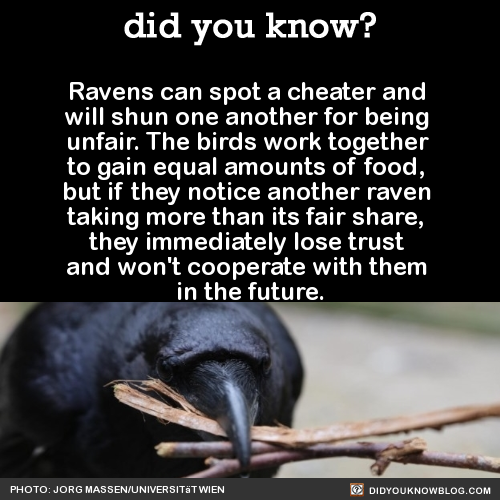
In an experiment, two ravens had to simultaneously pull the two ends of one rope to slide a platform with two pieces of cheese into reach. If only one of them pulled, the rope would slip through the loops, leaving them with no cheese. Without any training they solved the task and cooperated successfully.

However, when one of the two birds cheated and stole the reward of its companion, the victims of such cheats immediately noticed and started defecting in further trials with the same individual.

“Such a sophisticated way of keeping your partner in check has previously only been shown in humans and chimpanzees, and is a complete novelty among birds.”

Source
After 20 years in space, the Cassini spacecraft is running out of fuel. In 2010, Cassini began a seven-year mission extension in which the plan was to expend all of the spacecraft’s propellant exploring Saturn and its moons. This led to the Grand Finale and ends with a plunge into the planet’s atmosphere at 6:32 a.m. EDT on Friday, Sept. 15.
The spacecraft will ram through Saturn’s atmosphere at four times the speed of a re-entry vehicle entering Earth’s atmosphere, and Cassini has no heat shield. So temperatures around the spacecraft will increase by 30-to-100 times per minute, and every component of the spacecraft will disintegrate over the next couple of minutes…
Cassini’s gold-colored multi-layer insulation blankets will char and break apart, and then the spacecraft’s carbon fiber epoxy structures, such as the 11-foot (3-meter) wide high-gain antenna and the 30-foot (11-meter) long magnetometer boom, will weaken and break apart. Components mounted on the outside of the central body of the spacecraft will then break apart, followed by the leading face of the spacecraft itself.
Make sure to follow us on Tumblr for your regular dose of space: http://nasa.tumblr.com.

Cullen and Romulus are the world’s first set of identical twin puppies. While it’s possible that canines could have produced twins in the past, these Irish wolfhounds are the first to be medically documented and confirmed with DNA testing. Source Source 2

-
 cokeordie liked this · 6 months ago
cokeordie liked this · 6 months ago -
 nineteenninetyoneandgunning liked this · 8 months ago
nineteenninetyoneandgunning liked this · 8 months ago -
 florabotwin liked this · 8 months ago
florabotwin liked this · 8 months ago -
 425609334523486anachronismus liked this · 2 years ago
425609334523486anachronismus liked this · 2 years ago -
 justremainingmyself liked this · 2 years ago
justremainingmyself liked this · 2 years ago -
 mystical-mushroom reblogged this · 3 years ago
mystical-mushroom reblogged this · 3 years ago -
 squeackygee reblogged this · 3 years ago
squeackygee reblogged this · 3 years ago -
 squeackygee liked this · 3 years ago
squeackygee liked this · 3 years ago -
 mystical-mushroom liked this · 3 years ago
mystical-mushroom liked this · 3 years ago -
 antunescamargo liked this · 4 years ago
antunescamargo liked this · 4 years ago -
 accidental-ambience reblogged this · 4 years ago
accidental-ambience reblogged this · 4 years ago -
 girlhomo reblogged this · 4 years ago
girlhomo reblogged this · 4 years ago -
 pigknightwarrior liked this · 4 years ago
pigknightwarrior liked this · 4 years ago -
 texasmadeelsajade liked this · 4 years ago
texasmadeelsajade liked this · 4 years ago -
 bringmesomefood reblogged this · 4 years ago
bringmesomefood reblogged this · 4 years ago

